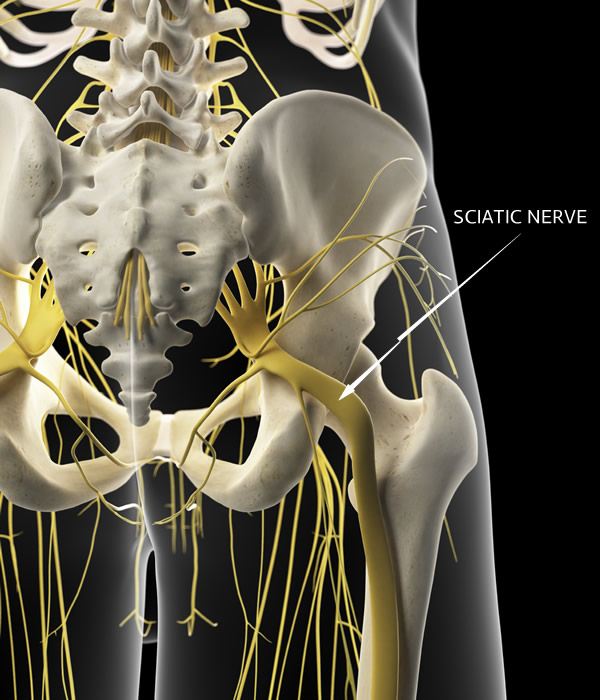What Is Sciatica?
Sciatica
The debilitating condition known as sciatica is the result of compression or irritation on the major nerve that originates in the low back and supplies each leg with innervation (To stimulate a nerve, muscle, or body part to action). This nerve interference is most often triggered by an injury or misalignment in the spine, either putting direct compression on the sciatic nerve root or causing a bulge (or herniation) of a disc, which then in turn causes compression on the nerve.
The most common complaint associated with sciatica is a burning pain running from the low back to the lower legs. Nevertheless, there can be a variety symptoms experienced with sciatica depending on the specific nerve fibers are being affected including numbness, aches, tingling, or weakness. Sciatica patients also often describe a “pins and needles” sensation in the feet.
Sciatica symptoms often begin slowly but become more severe as time goes by, and the pain is often exacerbated by illness or sudden movements such as sneezing or coughing.
Symptoms of Sciatica
- Pain that radiates from your lower (lumbar) spine to your buttock and down the back of your leg is the hallmark of sciatica.
- Patients might feel the discomfort almost anywhere along the nerve pathway, but it’s especially likely to follow a path from your low back to your buttock and the back of your thigh and calf.
- The pain can vary widely, from a mild ache to a sharp, burning sensation or excruciating pain. Sometimes it can feel like a jolt or electric shock.
- The pain can be worse when you cough or sneeze, and prolonged sitting can aggravate symptoms. Usually only one side of your body is affected.
- Some patients also have numbness, tingling or muscle weakness in the affected leg or foot.
- Pain in one part of your leg and numbness in another part can also be experienced.
Causes of Sciatica
- The Sciatic Nerve Becomes Pinched, Usually By A Herniated Disk In Your Spine
- The Sciatic Nerve Becomes Pinched By An Overgrowth Of None (Bone Spur) On Your Vertebrae
- More Rarely, The Nerve Can Be Compressed By A Tumor Or Damaged By A Disease Such As Diabetes.
How Chiropractic Care Can Help
Because there are multiple disorders that can cause the pain of sciatica, the first step is determining the root cause of the symptoms through a thorough review of the patient’s medical history in conjunction with a physical and neurological examination. Diagnostic imaging studies such as x-rays, MRI, CT may also be required to get a more complete picture of a patient’s condition.
Though the prescribed treatment of sciatica usually depends on the cause of the patient’s sciatic pain, chiropractic adjustments can remove nerve interference associated with misalignments in the lumbar spine and pelvis without medications or surgery. Gentle, precise chiropractic care at Charlotte Chiropractic Center offers an effective and drug-free method of treatment for sciatica.



